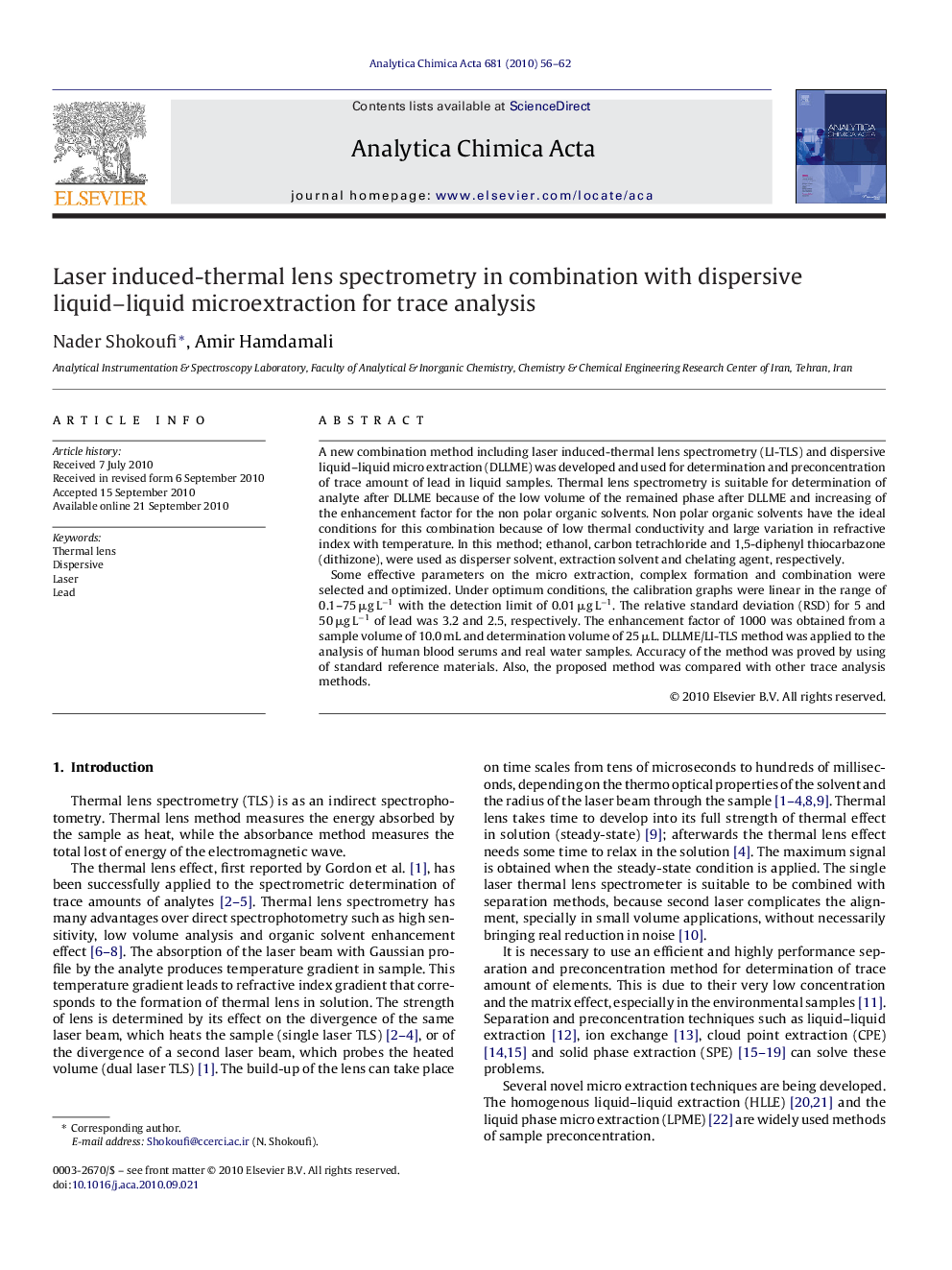| Article ID | Journal | Published Year | Pages | File Type |
|---|---|---|---|---|
| 1166657 | Analytica Chimica Acta | 2010 | 7 Pages |
A new combination method including laser induced-thermal lens spectrometry (LI-TLS) and dispersive liquid–liquid micro extraction (DLLME) was developed and used for determination and preconcentration of trace amount of lead in liquid samples. Thermal lens spectrometry is suitable for determination of analyte after DLLME because of the low volume of the remained phase after DLLME and increasing of the enhancement factor for the non polar organic solvents. Non polar organic solvents have the ideal conditions for this combination because of low thermal conductivity and large variation in refractive index with temperature. In this method; ethanol, carbon tetrachloride and 1,5-diphenyl thiocarbazone (dithizone), were used as disperser solvent, extraction solvent and chelating agent, respectively.Some effective parameters on the micro extraction, complex formation and combination were selected and optimized. Under optimum conditions, the calibration graphs were linear in the range of 0.1–75 μg L−1 with the detection limit of 0.01 μg L−1. The relative standard deviation (RSD) for 5 and 50 μg L−1 of lead was 3.2 and 2.5, respectively. The enhancement factor of 1000 was obtained from a sample volume of 10.0 mL and determination volume of 25 μL. DLLME/LI-TLS method was applied to the analysis of human blood serums and real water samples. Accuracy of the method was proved by using of standard reference materials. Also, the proposed method was compared with other trace analysis methods.
